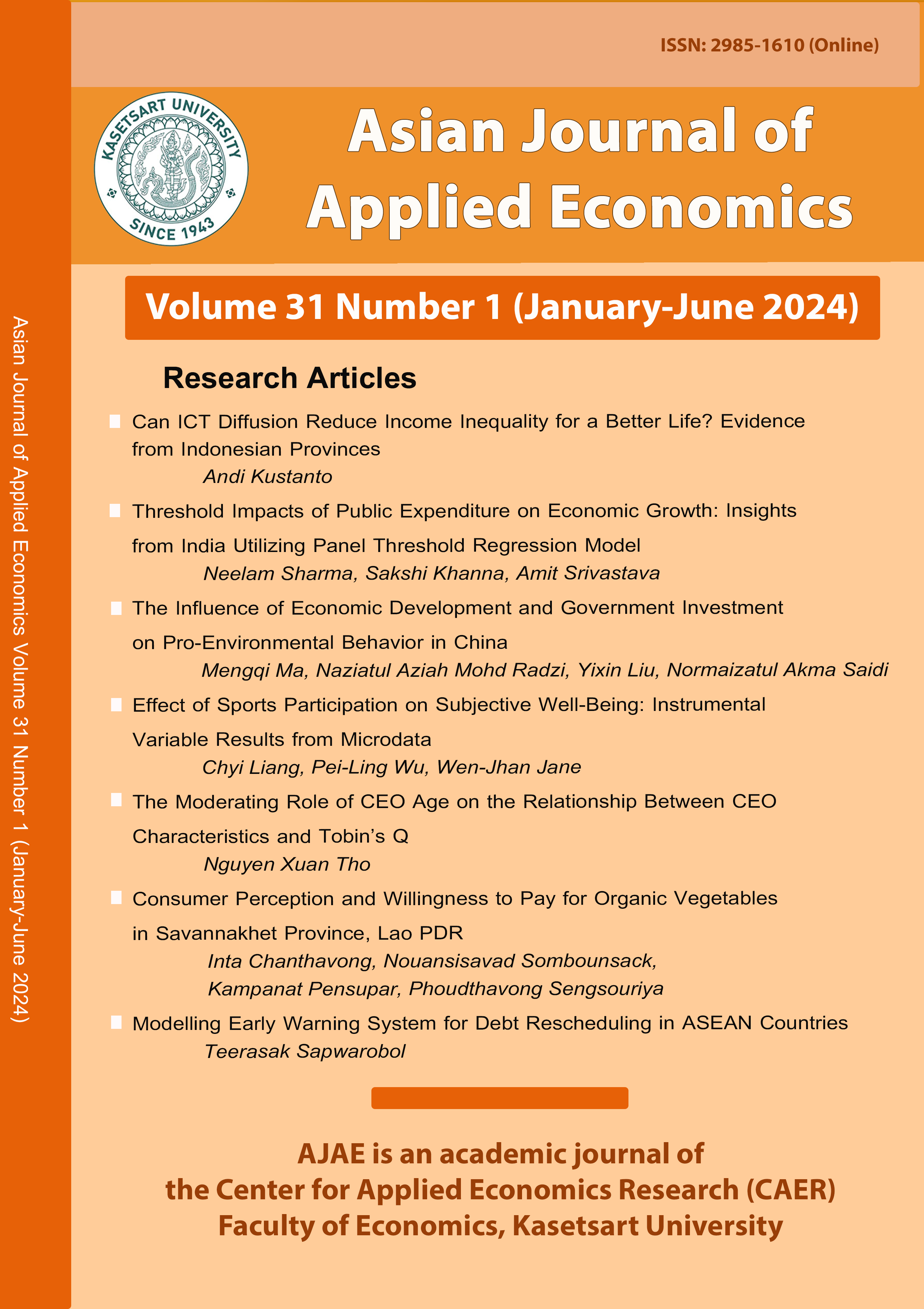Modelling Early Warning System for Debt Rescheduling in ASEAN Countries
Main Article Content
Abstract
This study aims to develop an early warning system for debt rescheduling in ASEAN countries by utilizing yearly time series data from 1999 to 2019. The logit model is employed to construct the early warning system for debt rescheduling in ASEAN countries, with debt rescheduled data collected from The World Bank’s International Debt Statistics database. The empirical results indicate that the early warning system model for debt rescheduling in ASEAN countries should comprise four variables: the unemployment rate, concessional debt to total debt, external debt over GDP, and international reserve to short-term debt. Interestingly, when setting the cutoff value at 0.5, the model demonstrates high predictive accuracy, with a Type II error rate of 10 percent and a Type I error rate of only 4.1 percent. Overall, the early warning system model for debt rescheduling in ASEAN countries appears capable of correctly predicting events 80 times out of 84.
Article Details

This work is licensed under a Creative Commons Attribution-NonCommercial-NoDerivatives 4.0 International License.
The paper is published under CC BY-NC-ND, in which the article is freely downloaded and shared in its original form non-commercially and its citation details are identified.
References
Anantapong, W. (2003). The impact of economic factors on probability of debt crisis in developing countries (Master’s thesis). Chulalongkorn University, Bangkok, Thailand. (in Thai)
Avramovic, D. (1964). Economic growth and external debt. Johns Hopkins Press. Retrieved from https://documents1.worldbank.org/curated/fr/883691468780874544/pdf/multi0page.pdf
Bulow, J. & Rogoff, K. (1990). Cleaning up third world debt without getting taken to the cleaners. The Journal of Economic Perspectives, 4(1), 31-42.
Chowdhury, K. (2000). Australia's external debt: Is it a symptom or a cause of economic slowdown?. Faculty of Business - Papers (Archive), 470. Retrieved from https://core.ac.uk/reader/36988750
Feder, G., & Just, R. E. (1977). A study of debt servicing capacity applying logit analysis. Journal of Development Economics, 4(1), 25–38.
Honak, S. (2001). An analysis of external debt servicing capacity of Thailand (Master’s thesis). Dhurakij Pundit University, Bangkok, Thailand. (in Thai)
Kenen, P. B. (1990). Organising debt relief: The need for a new institution. The Journal of Economic Perspectives, 4(1), 7-18.
Lau, E., & Lee, A. S. (2016). Determinants of external debt in Thailand and the Philippines. International Journal of Economics and Financial, 6(4), 1973-1980.
Laušev, J., Stojanović, A., & Todorović, N. (2011). Determinants of debt rescheduling in Eastern European countries. Economic Annals, 56(188), 7-31.
Llorca, M. (2017). External debt sustainability and vulnerabilities: Evidence from a panel of 24 Asian countries and prospective analysis. ADBI Working Paper, 692, 1-24.
Sachs, J. D. (1990). A strategy for efficient debt reduction. The Journal of Economic Perspectives, 4(1), 19-30.
Siddiqui, R., & Siddiqui, R. (2001). Determinants of debt rescheduling in Pakistan. The Pakistan Development Review, 40(4), 689-704.
Wyplosz, C. (2007). The foreign exchange reserves buildup: business as usual? Graduate Institute of International Studies and CEPR. Retrieved from https://www.un.org/esa/ffd/wp-content/uploads/2007/03/20070306_Wyploz.pdf


